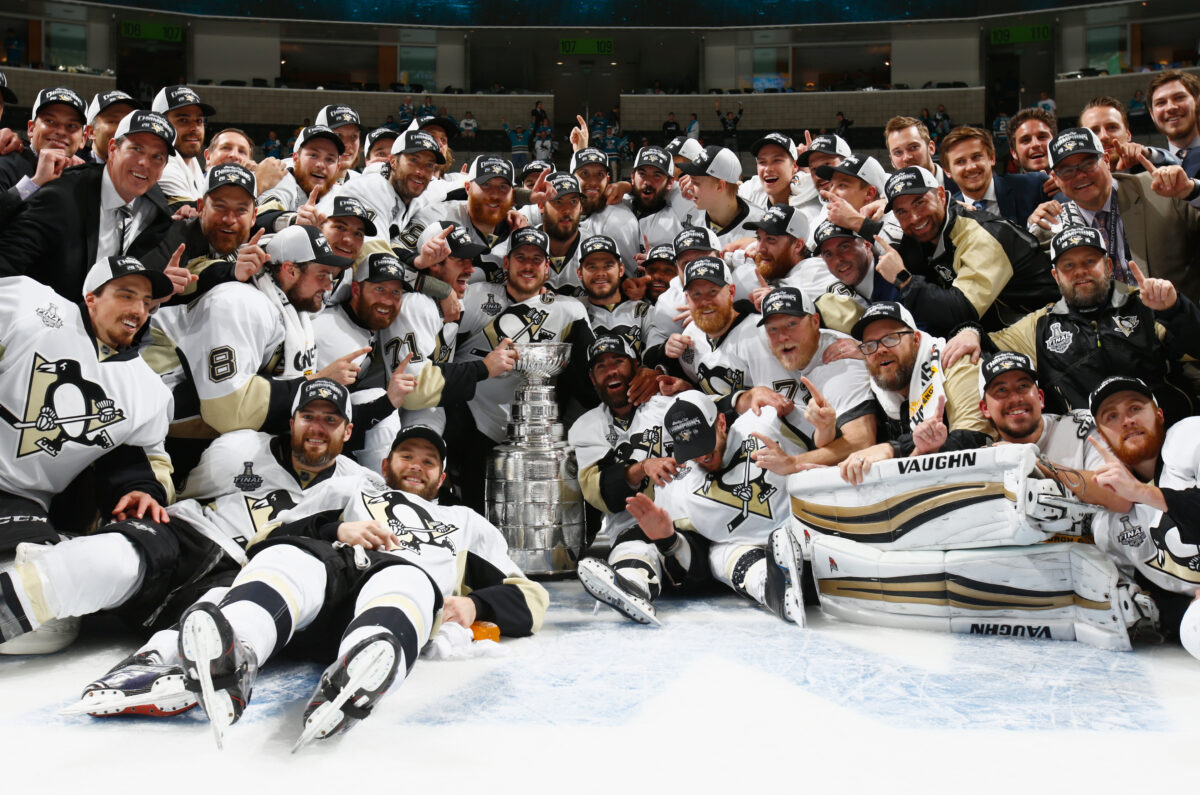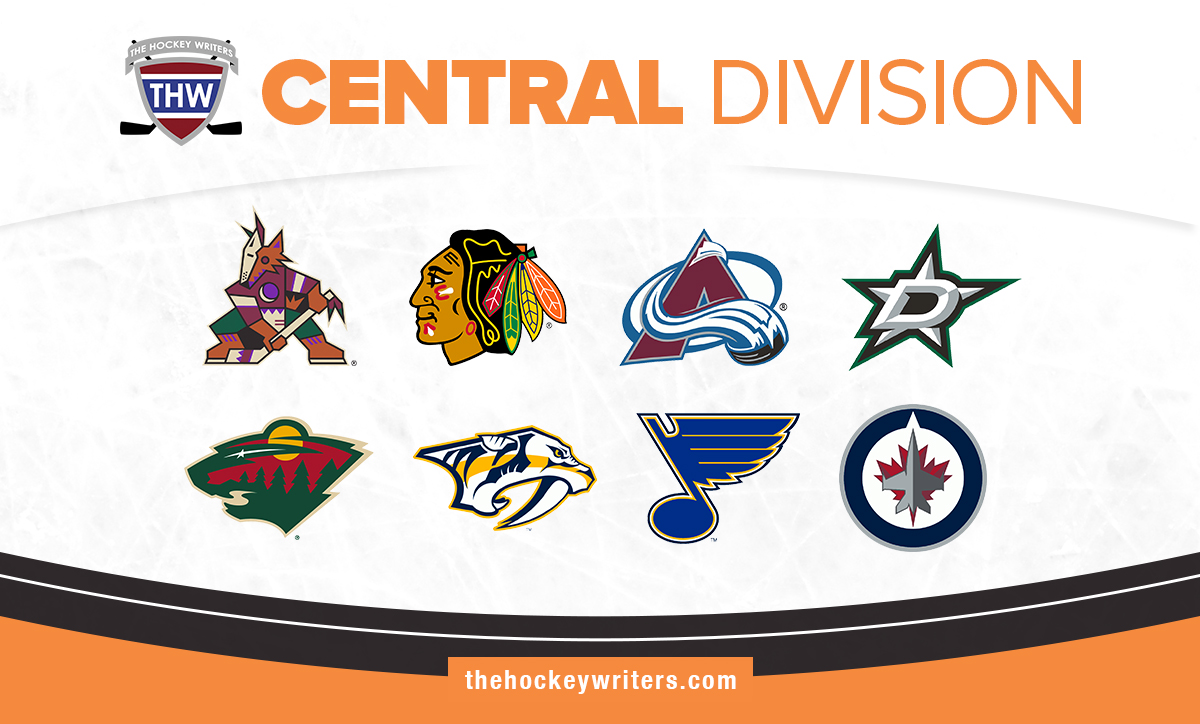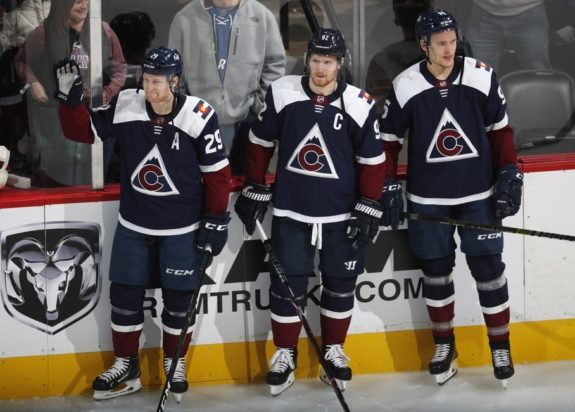The Colorado Avalanche finished the first half of the 2021-22 season with 68 points in the standings, and the best winning percentage (.773) in the NHL. They are first in the Central Division and Western Conference and have at least one point in seventeen straight games, a franchise record. The club has a record of 15-0-2 over that stretch.
It seems almost unthinkable that the Avalanche won’t be in the conversation for the Presidents’ Trophy, awarded to the team with the best regular-season record, and flat out impossible that they could miss this year’s playoffs. But this is sports. Crazy things happen. The chance for the unexpected is at least part of the reason we watch.
Historic Regular Season Collapses in NHL History
There are several examples of teams starting strong and finishing weak, going on late-season losing streaks and either missing the playoffs or exiting in the first round.
Consider the 2007-08 Ottawa Senators. The team opened the season 15-2-0 and ended the first half 27-10-4. They finished the season going 16-21-4. They made the playoffs but were swept in the first round by the Pittsburgh Penguins.

Those same Penguins limped into the 2014-15 postseason, winning just four of their last 15 games, going 4-9-2 down the stretch. They lost to the New York Rangers in five games in the first round.
Will the Avalanche fall victim to the same fate? Probably not, but as they say, you have to play the games. Let’s see how Colorado’s second half shapes up, and project their final record.
Colorado’s Difficult Second Half Schedule
The Avalanche’s 15 wins in the month of January tied two other teams — the Boston Bruins in 2013 and the Pittsburgh Penguins in 2014 — for most wins in a single calendar month. It has to be noted that January was a soft month for Colorado. Eight of the 16 teams they faced had losing records. They also started the month coming off an unplanned 16-day COVID break, so they were well-rested. That takes nothing away from the accomplishment, but it does beg the question about what lies ahead.
When the NHL resumes play after the All-Star break, a look at Colorado’s schedule makes two things apparent:
First, Colorado will play 38 games in 80 days, an average of one game every 2.1 days. This will include six back-to-back pairs of games, including their final two regular-season games, both against division rivals, the Nashville Predators and Minnesota Wild.

The Avalanche played their first 44 games over a 126-day span, an average of one game every 2.9 days, with five back-to-backs. When you discount the two weeks they were off due to COVID cancellations, they still played 44 games in 112 days, an average of 2.5 days. The intensity of the upcoming schedule will be grueling. To add insult to injury, only 17 of the team’s remaining games will be on home ice; 21 will be played on the road.
Second, the level of opposition will be fierce. 28 of the 38 teams the Avalanche will face have a winning record as of this writing. (The Vancouver Canucks, 20-20-6, are not counted among those winning teams.) April, the last month of the season will be especially difficult. Colorado will play 14 games in 28 days, 12 against clubs with winning records.
Avalanche Weaknesses
Colorado’s weaknesses are few and far between, but they do exist. It’s worth discussing them to weigh how much they will or will not impact the Avalanche’s ability to replicate the high level of play from the first half of the season.
First is a real deficiency in the face-off circle. The Avalanche win only 47.2% of their face-offs, which ranks 28th in the league. At first blush, it doesn’t really matter. In the 2020-21 season, the Tampa Bay Lightning ranked 16th in the league in the regular season and were 11th out of 16 teams in the playoffs. But face-off ineptitude can matter situationally. Late in a game, when trapped in your own zone, failure to control the puck can lead to opposition goals. It’s a small complaint, but it’s an area the team can improve.
Second, is the penalty kill (PK). Where the importance of face-offs can be debated, the value of an effective PK cannot. It’s not a fluke that the Montreal Canadiens led all 16 teams in the 2020-21 postseason, killing 91.8% of the penalties they faced. Some of that was due to Carey Price’s exceptional goaltending, but whatever the reason, it helped the team punch far above its weight, propelling them to the Stanley Cup finals.
Related: 3 Avalanche Trade Targets To Fix Penalty Kill
Admittedly, the Avalanche PK is greatly improved from earlier in the season. From the start of the current campaign through January 15, the Avalanche PK ranked 29th in the league, killing a dismal average of 73.6% of penalties. In the ten games since mid-January, the Avalanche are ranked number two in the league, having killed 90% of penalties they faced. Some of this is due to changing personnel on the PK, notably the addition of Nazem Kadri. Whatever the reason, the Avalanche will need to continue this trend to realize its Cup hopes.
Colorado Due to Get Healthy
Injury and COVID wreaked havoc on the Avalanche in the first half. The team’s number one line of Nathan MacKinnon, Gabriel Landeskog, and Mikko Rantanen played together in only 21 of the 44 games. The second line of Kadri, Andre Burakovsky, and Valeri Nichushkin fared a little better, playing as a unit in 23 games. The two lines — Colorado’s top six forwards — have only been on the ice together eight times this season. That’s just 18% of the time. In games when all six forwards have been on the ice, Colorado is 7-1-0.

The law of averages, along with the Omicron variant of the COVID-19 virus ebbing, would suggest the Avalanche will be a healthier, more cohesive unit in the second half.
The Projection For Colorado
The Avalanche are likely to come back to Earth, at least a little bit. Water seeks its level, and players like Kadri and Devon Toews, while capable of excellence, are likely to regress. Add to that the challenging schedule, and it’s hard to imagine Colorado replicating their first-half result. With this in mind, the prediction for the final 38 games is:
23-11-4
Add that to the first half result of 32-8-4, and you get a full season result of 55-19-8, which would translate to 128 points. That would likely be good enough for the Presidents’ Trophy and home ice throughout the playoffs. Given how well the Avalanche perform at home, expect them to pull out all the stops to win secure that honor.
There’s an old adage in baseball: Every game you win in April is a game you don’t have to win in September. That’s true of hockey, too. Every game you win in October — or in the case of the Avalanche, January — is one you don’t have to win in April.